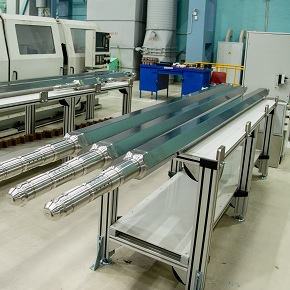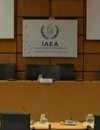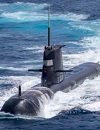 |
||
|
TVEL unveils new fuel solutions for the Indian market TVEL, PUBLISHED 24.11.2022 On November 19, 2022, TVEL's Senior Vice-President for Research and Development Alexander Ugryumov has presented the new Russian technologies and solutions for nuclear fuel cycle at the conference Characterization and quality control of nuclear fuels in Hyderabad, India. The presentation covered the key developments which may enhance efficiency of the functioning units of the Kudankulam NPP, powered by VVER-1000 reactors, as well as the ones under construction. In particular, it embraced new materials and models of nuclear fuel, solutions for higher uranium enrichment, technologies of closed nuclear fuel cycle and the new prospects they open for NPPs. Longer fuel cycles In 2022, TVEL started exports of the more advanced TVS-2M fuel to India, instead of the UTVS model, previously supplied to Kudankulam. Introduction of the new fuel enables elongation of the reactors operation between refuelings form 12 to 18 months, which would essentially enhance the power plants performance and economic efficiency (besides, TVS-2M model is more reliable). However, the new Rosatom's developments have a potential to make the further operations of the power plant, lasting for decades, even more efficient. Alexander Ugryumov stressed, that introduction of nuclear fuel with enrichment over the 5% level will enable operations of VVER-1000 reactors in longer 24 months fuel cycles. Extending the fuel cycle means that a power plant may stop reactors for refueling less frequently (and thus, generate more electricity per year), purchase fewer fresh fuel assemblies, and also offload less irradiated fuel bundles (handling of spent fuel also requires expenses). Using fuel with uranium enrichment over 5% may decrease the amount of annually replaced fuel bundles by the rate which would provide a significant economic impact on the power units lifecycle. ATF A key trend of the recent years is the development of ATF (Advanced Technology Fuel), a new generation fuel in terms of safety. Rosatom is also accomplishing the Russian ATF program, which includes development and testing new fuel materials, both of cladding and fuel matrix. In a VVER-1000 reactor at the Rostov NPP, lead test rod program is under way. Several fuel assemblies containing ATF fuel rods with innovative claddings made of chromium-nickel alloy, as well as zirconium alloy with chromium coating, undergo irradiation. Along with that, in the MIR research reactor at the Research Institute of Atomic Reactors in Dimitrovgrad, experimental fuel rods with four different combinations of fuel composition and cladding materials undergo the fourth cycle of testing. In addition, testing of VVER and PWR fuel rods with new uranium-silicide fuel has begun in 2022, also in the MIR reactor. Balanced fuel cycle A feature of the Russian approach is development of the dual-component nuclear power industry with thermal and fast neutron reactors, as well as the introduction of closed nuclear fuel cycle technologies, which are based on fabrication of fresh uranium-plutonium fuel from reprocessed irradiated fuel. The technologies of fast reactors and nuclear recycling enable Rosatom to offer to its foreign customers a new integrated product - Balanced Nuclear Fuel Cycle. It is aimed at fundamental reduction of both, the volume of nuclear waste sent for disposal, and its radiation activity level. Balanced NFC would improve the safety of waste management and reduce environmental risks without leaving nuclear legacy for the future generations, as well as ensure a sustainable consumption and production model. It will multiply increase the feed-stock base of nuclear energy through involvement of secondary nuclear fuel cycle products, such as depleted uranium and plutonium. Rosatom is ready to provide foreign customers with a full range of solutions, including processing of spent nuclear fuel in Russia (with afterburning of highly active elements extracted from irradiated fuel in fast reactors), as well as manufacturing and supply of uranium-plutonium fuel for common thermal neutrons reactors (in particular, light-water installations, like VVER). 5th generation fuel In order to establish serial batch production of uranium-plutonium fuel for VVER reactors, Rosatom develops the fifth generation model of a fuel assembly - TVS-5. The features of this design would enable to develop a fully automated unmanned fabricaiton of fuel with plutonium and its handling at nuclear power plants. At present, TVEL Fuel Company has completed a set of bench tests of full-scale TVS-5 mock-ups and prepared relevant validations. For 2023, it is planned to manufacture several TVS-5 bundles with standard uranium fuel, the next stage should be pilot operation of the innovative design assemblies at one of Russian nuclear power plants. Topics: NFC, Rosatom, TVEL, India Other news: WANO announces the winners of the 2022 Nuclear Excellence Awards WANO presents the awards during each WANO Biennial General Meeting. The Paks II Nuclear Power Plant receives construction licence This is the first time that a power unit with this type of reactor has been issued a construction licence in the European Union. 440 nuclear units are operating in the world, 54 units are under construction Construction of first CAP-1000 is started. |
Hero of the day 
Rosatom starts supplies of nuclear fuel for CFR-600 fast reactor After the launch of the first CFR-600 power unit, Xiapu NPP in Fujian province will become the first nuclear power plant with a high-capacity fast reactor outside of Russia. INTERVIEW
FR22 concluded its work OPINION
Zhao Xuelin, |

